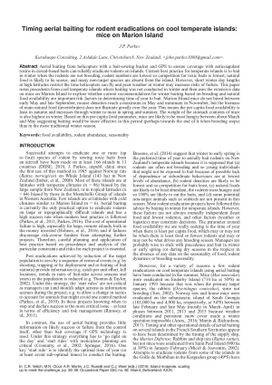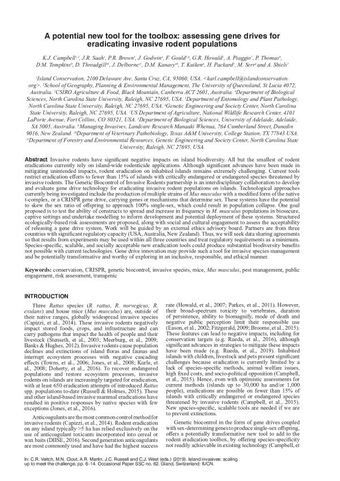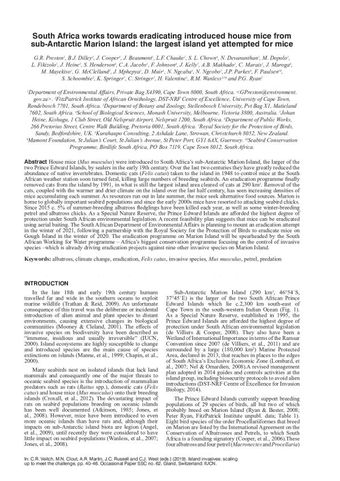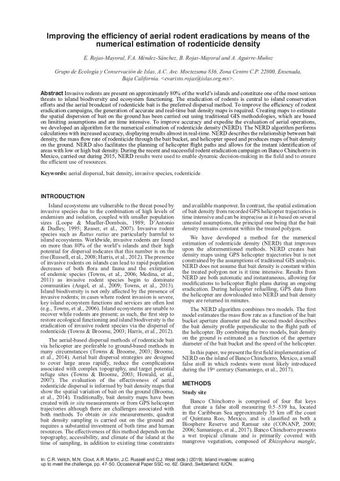Timing aerial baiting for rodent eradications on cool temperate islands: mice on Marion Island
- Description:
- Aerial baiting from helicopters with a bait-sowing bucket and GPS to ensure coverage with anticoagulant toxins in cereal-based baits can reliably eradicate rodents on islands. Current best practice for temperate islands is to bait in winter when the rodents are not breeding, rodent numbers are lowest so competition for toxic baits is lowest, natural food is likely to be scarce, and many non-target species are absent from the island. However, short winter day lengths at high latitudes restrict the time helicopters can fly and poor weather in winter may increase risks of failure. This paper notes precedents from cool temperate islands where baiting was not conducted in winter and then uses the extensive data on mice on Marion Island to explore whether current recommendations for winter baiting based on breeding and natural food availability are important risk factors in determining time of year to bait. Marion Island mice do not breed between early May and late September, mouse densities reach a maximum in May and minimum in November, but the biomass of main natural food (invertebrates) does not fluctuate greatly over the year. This means the per capita food availability is least in autumn and increases through winter to most in spring and summer. The weight of the stomach contents of mice is also highest in winter. Based on this per capita food parameter, mice are likely to be most hungry between about March and May suggesting baiting would be more effective in this period (perhaps towards the end of it when breeding stops) than in the more traditional winter season.
- Display date:
- 2019
- Collections:
- Secretariat of the Pacific Regional Environment Programme (SPREP)
- Publisher:
- International Union for Nature Conservation (IUCN)
- Content partner:
- Secretariat of the Pacific Regional Environment Programme (SPREP)
- Availability:
- Not specified
-
Copyright status: All rights reservedFind out more about what you are able to do with this itemThis item is all rights reserved, with means you'll have to get permission from Secretariat of the Pacific Regional Environment Programme (SPREP) before using it. For more information, please see our use and reuse page.What can I do with this item?Non-infringing useNZ copyright law does not prevent every use of a copyright work, and this item may be hosted by an international institute or organisation. You should consider what you can and cannot do with a copyright work.No sharingYou may not copy and/or share this item with others without further permission. This includes posting it on your blog, using it in a presentation, or any other public use.No modifyingYou are not allowed to adapt or remix this item into any other works.No commercial useYou may not use this item commercially.
Related items
Welcome and warm Pasifik greetings
The information on this site has been gathered from our content partners.
The names, terms, and labels that we present on the site may contain images or voices of deceased persons and may also reflect the bias, norms, and perspective of the period of time in which they were created. We accept that these may not be appropriate today.
If you have any concerns or questions about an item, please contact us.



